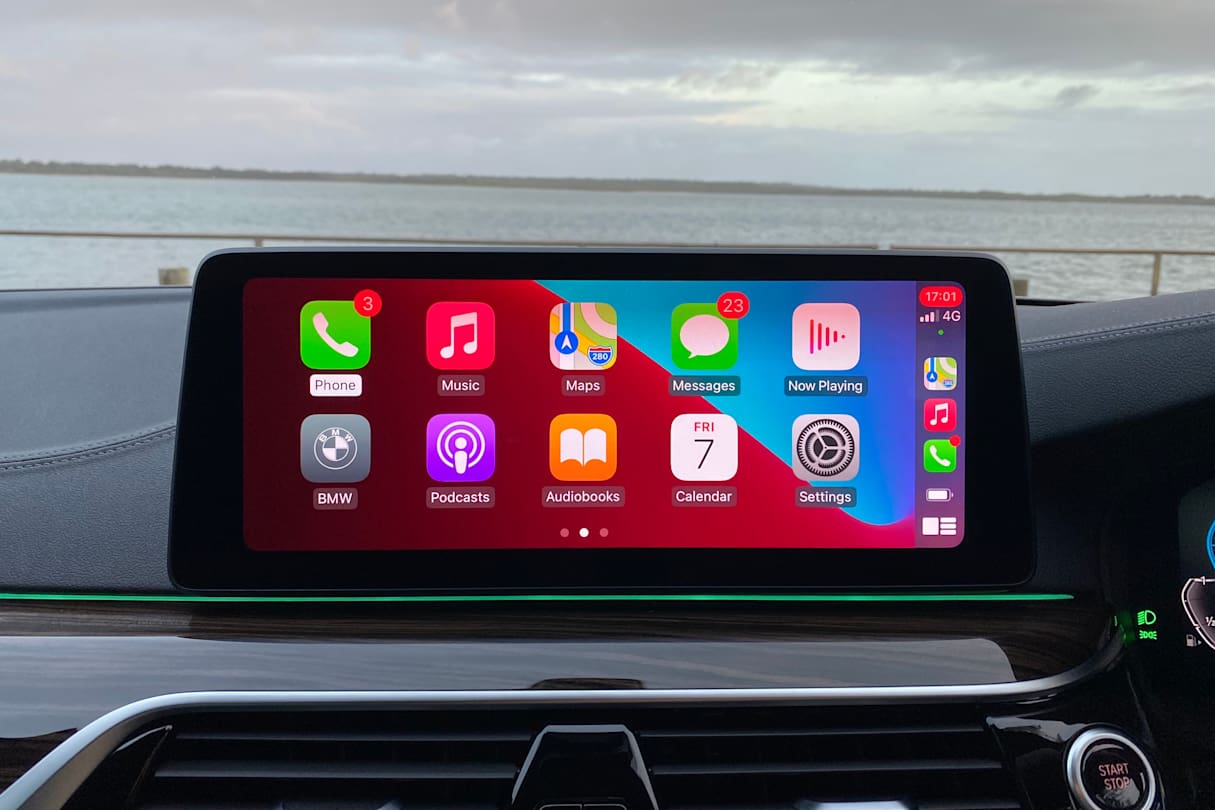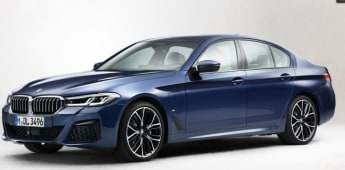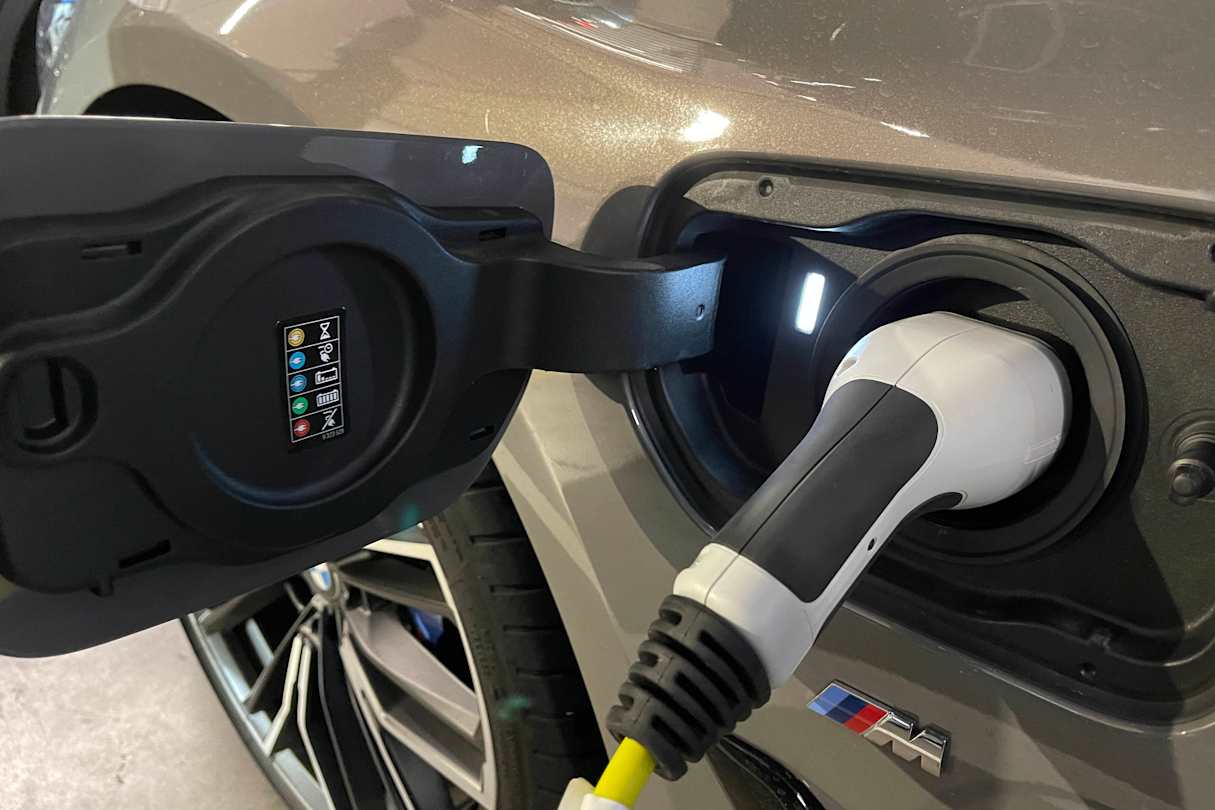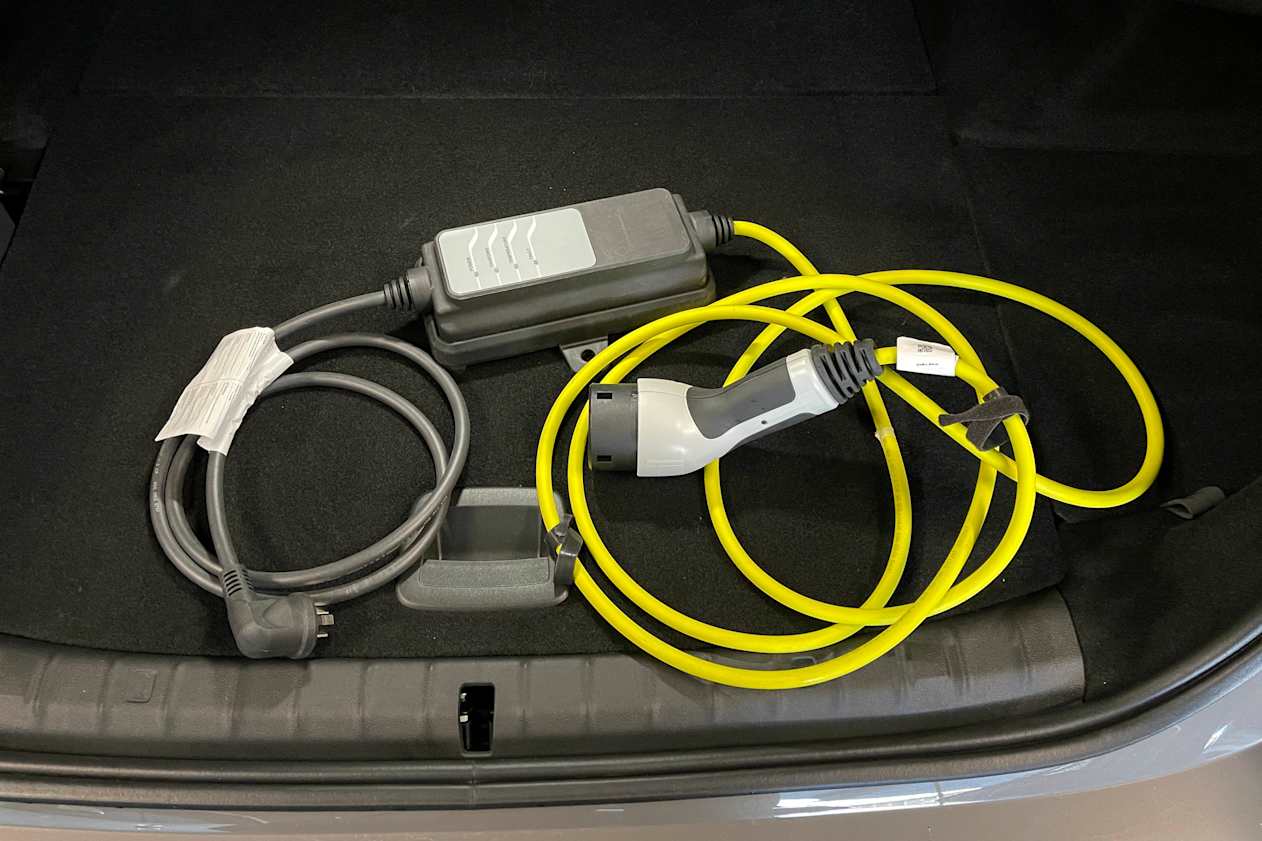Anyone unfortunate enough to hear me banging on about electric cars - or perhaps more accurately, electrified cars - will be aware of my undying love for the existence of plug-in hybrid electric vehicles (PHEVs).
I love them because they offer a drama-free step into electrification. You don't need a big box on the wall to make sure you're charged overnight and because there's a petrol engine under the bonnet, as long as you've got fuel in the tank, your range anxiety disappears.
You can get around town in electrified silence and emissions-free smugness while still planning that around-Australia trip you'll never go on. It's absolutely the best of both worlds for those reluctant to take the next step. A genuine win-win, if you like.
Except that very few people buy them. Their existence in the catalogues of a number of car companies feels like a weary, "We should at least do something" from product planners. BMW has been trying with PHEVs for a while, with selected offerings in the 3, 5 and X5 range. Given the 5 Series has had its mid-life facelift, what BMW calls the LCI, it's time for another look.
BMW 530E 2021: M Sport Phev Lci
| Engine Type | Turbo 4, 2.0L |
|---|---|
| Fuel Type | Premium Unleaded/Electric |
| Fuel Efficiency | 2.3L/100km (combined) |
| Seating | 5 |
| Price From | $56,870 - $65,340 |
Price and features - Does it represent good value for the price? What features does it come with?
The 530e sits almost smack-bang in the middle of a still reasonably extensive 5 Series range. While you can have an "entry" level 520i for $99,900 (before on-roads), the 530e lands at $122,900 (before on roads), which itself is $3000 more than the 530i, and the same amount less than the NSW cops' favourite, the 530d.
Given the price, you'd expect some gear and boy howdy does BMW deliver. You get 19-inch alloys, a 16-speaker stereo, multi-zone climate control, ambient LED lighting, reversing camera to go with the front and side cameras, keyless entry and start, electronic dampers, active cruise control, electric and heated front seats, sat nav, auto LED headlights, heat-insulated glass, head-up display, a mostly real leather interior, auto parking, auto wipers, digital dashboard, wireless charging and run-flat tyres.
The huge touchscreen on the dash runs BMW OS7, which accepts inputs via touch, the console-mounted rotary dial and (optional) various hand wavey-movements. The speakers have harmon/kardon badges on them and there is DAB digital radio and wireless connectivity for both Apple CarPlay and Android Auto.
In something of a classic BMW own-goal, the wireless charge pad that is designed to keep your phone snug is too snug for bigger phones like my over-compensatory iPhone. Even with the cover off, it just won't fit. Thankfully there's also a USB-C port in the centre-console bin.

The 520e I had for the week also had the $5900 Enhance package (20-inch M alloy wheels, glass sunroof and the excellent BMW Laserlight headlights), $2300 Nappa Black leather package, comfort front seats ($500) and a built-in dash cam ($390) called BMW Drive Recorder. This brought the price up to $131,990 before on-roads. Just so you know, the Laserlights are $2400 on their own.
Design - Is there anything interesting about its design?
The G30 5 Series dates back to a time when people thought the grille on this was A Bit Much. How wrong they were. The 5, like the 3, used to be part of a clutch of executive sedans that formed the backbone of the company's expansion and success from the 1980s onwards. That means the styling is never too adventurous and even Chris Bangle's E60 5 Series, while striking, was not particularly controversial.

The only problem with the G30 is that it's hard to distinguish from its predecessor, but that's not a real issue when you see how elegant this car is. Easy on the chrome, proportional grille, big wheels, it's a proper smooth operator, visually speaking.
The cabin is holding up nicely and fits with the rest of the BMW range. It's impeccably well built, full of nice materials and even the wood trim is all right. The black Nappa leather is quite lovely but I can't tell you what the standard stuff is like, so you'll have to work that one out for yourself. It's very calm in here, with a good balance of buttons and screens with which to operate the car and while it doesn't have the you-beaut wow of its E Class rival, with its two massive slabs of screen in front of you, it has plenty to offer.

Practicality - How practical is the space inside?
The 5 is almost five metres long, so as you might expect, it's big inside. Back-seat passengers have a ton of space to play with and even three across back there is doable for a distance. The outboard seats have some nice shapes to them, too, so they hold rear passengers in if the driver gets a bit ambitious. Loads of legroom, good headroom and very importantly, a good view out through the big side windows. Properly comfortable, then.

Front and rear passengers each score a pair of cupholders for a total of four as well as the same number of bottle holders. The centre-console bin is long and shallow, but does feature a USB-C port. The wireless-charging pad also has a USB-A port for those without the functionality and/or a phone too big to fit. Both the cupholders and charging pad have a sliding cover.
The boot is smaller than the standard car's as there is a lithium-ion battery hidden underneath the now-sloping floor. With 410 litres, it's smaller than a 3 Series' but it doesn't look that small. There is also a spot for the charging cable and its bag behind the left wheel arch.
Drivetrain - What are the key stats for the drivetrain?
The 530e comes with a 2.0-litre four-cylinder turbocharged engine developing 135kW and 290Nm, with the eight-speed ZF automatic sending power to the rear wheels. The electric motor spins up 83kW and 230Nm, also driving the rear wheels. When everything is working together, the combined output is 185kW and 420Nm, which delivers a quick 6.1-second dash to 100km/h, which isn't mucking about.

You can choose four drive modes. EV will (mostly) drain the battery, Hybrid will keep the two working together and Sport will deliver the most power. And drain the battery, albeit more slowly. Adaptive works the averages and decides what you need or want by how frisky you're being with your driving style.
Energy consumption - How much does it consume? What’s the range like, and what it’s like to recharge/refuel?
The 12kWh battery takes up the same amount of space as the old one, but has more capacity, extending its EV range. The claimed EV range is 57km on the WLTP standard.
The iDrive system has a bunch of settings that you can play with to squeeze more out of the silent-running mode and there's also a battery-charging mode button to force the ICE to charge the battery while you're on the move. Also useful is a timing system, so you can schedule when the car charges to take advantage of the cheap power available in the dead of night.
Recharging is easy but sadly a bit slow off a domestic power point. Having said that, if you plug it in after a day's commuting, you'll be topped up to 100 percent overnight. It's a long charge, but it's not as if you'll be stranded if you forget. You can get a wallbox, but there's not much point.

The fuel tank is just 46 litres. The WLTP combined cycle figure is a laughable 2.3L/100km. On that official figure, you'll cover an unlikely 2000km. My week with the car, which included 70km on EV-only power with one charge off my solar panels, got me an indicated 6.1L/100km in a mostly suburban week of driving. So based off that, you'll get about 530km from one full charge and a full tank, which is a bit confusing. Keep charging and, if you're an average Australian who travels little more than 30km per day, you won't use much petrol at all.
Having said all of that, out on the freeway, you'll probably slide towards that 2.3L/100km and make it from Sydney and Melbourne on a single tank. Just.
Warranty & Safety Rating
Safety - What safety equipment is fitted? What safety rating?
The big price tag buys you a comprehensive safety package. It has seven airbags, ABS, stability and traction controls, blind-spot monitoring, active lane-departure warning, forward AEB, reversing AEB, forward collision warning, front cross traffic alert, reverse cross traffic alert, lane-keep assist, pedestrian alert in EV mode and tyre-pressure sensors.
The forward AEB works at high and low speeds. The pedestrian detection works at urban speeds and there does not appear to be cyclist detection.
There are also two ISOFIX and three top-tether anchors.
The 5 Series was last tested in 2017 and was awarded five ANCAP stars.
Ownership - What does it cost to own? What warranty is offered?
BMW really needs to up its game, as do Audi and Porsche (among others). Munich is still sticking with a three-year/unlimited-kilometre warranty while German rival Mercedes is up at five years and Japanese competitor Lexus four. You do get three years roadside assist thrown in.

All 5 Series (excluding M5) are eligible for service plans. For $1950, you're covered for five years/80,000km of servicing. As with most BMWs, servicing is based on how you drive but really, if we're being honest, the car will get you into the dealer once every 12 months or 15,000km. Roughly.
Driving - What's it like to drive?
The reason I like PHEVs as a tool for pushing people towards electrification is about more than the fact that it will likely cure buyers of range anxiety once they're realistic about their actual car usage. I mean it does do that, but it's more about the fact that PHEVs drive like a normal car, with few exceptions.
In EV mode, the acceleration is swift but not that brutal, YouTuber-friendly thrust EV fanboys use as proof that legacy car makers are dead. It's all very serene and very, very quiet as you move from traffic light to traffic light in near silence, while more than keeping up with traffic. The blue of the dashboard indicates your progress and the iDrive screen can keep you updated with power consumption.
The switch between EV and ICE propulsion is very smooth and it's almost like BMW has been doing this forever. You'll also discover an appreciable lift in performance, more in line with the M Sport badges. BMW's engineers have done nothing to make the 2.0-litre petrol sound better than a whirring mixmaster, though.
Slightly less M Sport-ey is the suspension. While there's absolutely nothing wrong with it, the adaptive dampers never dial things up too much for the average motorist. Granted the 5 will leave just about anything this size for dead as far as driver involvement goes, but it certainly keeps the dial closer to comfort than, say, the M550i does. Once again, it's a serene thing to get around in and passengers will love the quietness and easy flow of conversation. Or the lovely sound from the harmon kardon speakers.
You don't have to try too hard to cover a good chunk of the claimed 57km of EV range. Realistically you'll get close to 45km, even after my colleague Matt Campbell drained 20km of charge in a six-kilometre trip that he maintains was driven gently (snigger) and normally (guffaw). Without trying too hard, I managed 41km in pure EV after his attempts to ruin my numbers (not really, but I do enjoy the amusing false narrative).
Verdict
The G30 5 Series is an excellent car and unless you're looking for the serious punch of the V8 M550i, or want to run with the cops in the diesel, the 530e is a great option. No slower than the 530i, well-equipped and that rarest of things, a truly elegant BMW. Nobody buys a BMW with an eye on the budget, so at this level, the $3000 gap is nothing to worry too much about. For EV-sceptics, the range anxious or just for someone who just can't take the full EV plunge now, a PHEV is a great bridge between the two worlds.
And if nothing else, it's not a giant SUV.
Range and Specs
| Vehicle | Specs | Price* |
|---|---|---|
| 530e M Sport Phev Lci | 2.0L, Premium Unleaded/Electric, 8 SPEED AUTO STEPTRONIC SPORT | $56,870 - $65,340 |



























.jpg)

.jpg)



.png)
.jpg)
.jpg)
